Russian Contract Colt 1911
This 1911 Colt got over 200,000 views!
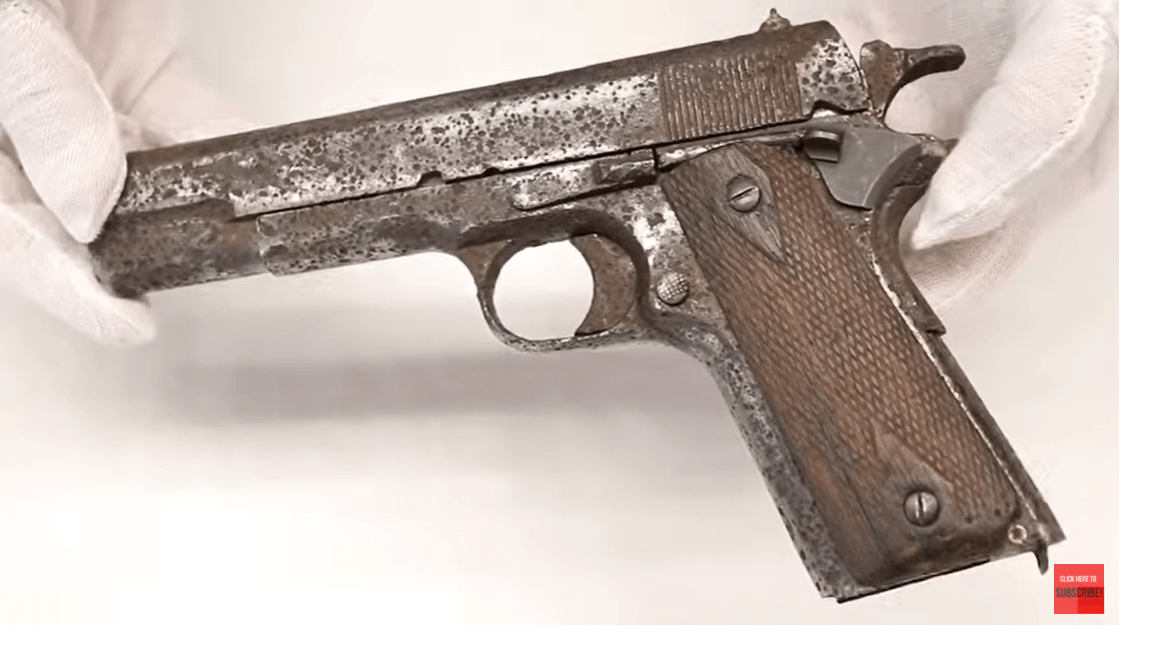
Hey guys and welcome to another Walk-in Wednesday. I have a really cool gun to show you, a very rare gun, old workhorse as you can see. This is a 1911 Colt, you recognize it right away. Except, it's very rare because it was issued to the Russian government in 1916. This gun really reminds me of a video that we just did recently about a Springfield 1911 that was purported to be a battlefield pickup. I think a lot of you didn't buy the story but it's an old workhorse as well. Now that gun, as ugly as it was, I know people get offended when I say guns are ugly, beat up. As beat up and old, kind of like me, as beat up and old as it was that had over 200,000 views within the first two weeks. So I’m hoping we can break that record with this 1911 Russian Colt.
Thanks Ed!
Now this gun does not belong to me or to Legacy Collectibles but instead a local collector brought it in. He was watching our videos, thanks for watching Ed, we'll call him Ed because that's his name. Ed brought this in and said hey I think this would make a really cool video and I agreed.
This gun has a story
The way he got this is a story to tell. In fact, if this gun could talk it would have quite a story to tell and so I'm going to kind of walk through the story of this gun as much as we know about it and I think you'll be surprised by some of the history behind this gun. So the first thing this gun would tell us, was it was born in 1916 and then it was issued to the Russian government in August of 1916.
I found another one
You can actually see the factory letter and in researching information about this gun I found one in much better condition. And by the way they're almost always really beat up like this because they literally were through several wars. They're usually beat up, they're not usually found in this condition. In my background here I found on the internet, we'll do a close-up of that. We found one that's only about 800 guns away and it was a group of 5,000, you can see 5,000 were issued to the Russian government and these were both shipped on the same day.
Why don’t these guns show up in the US?
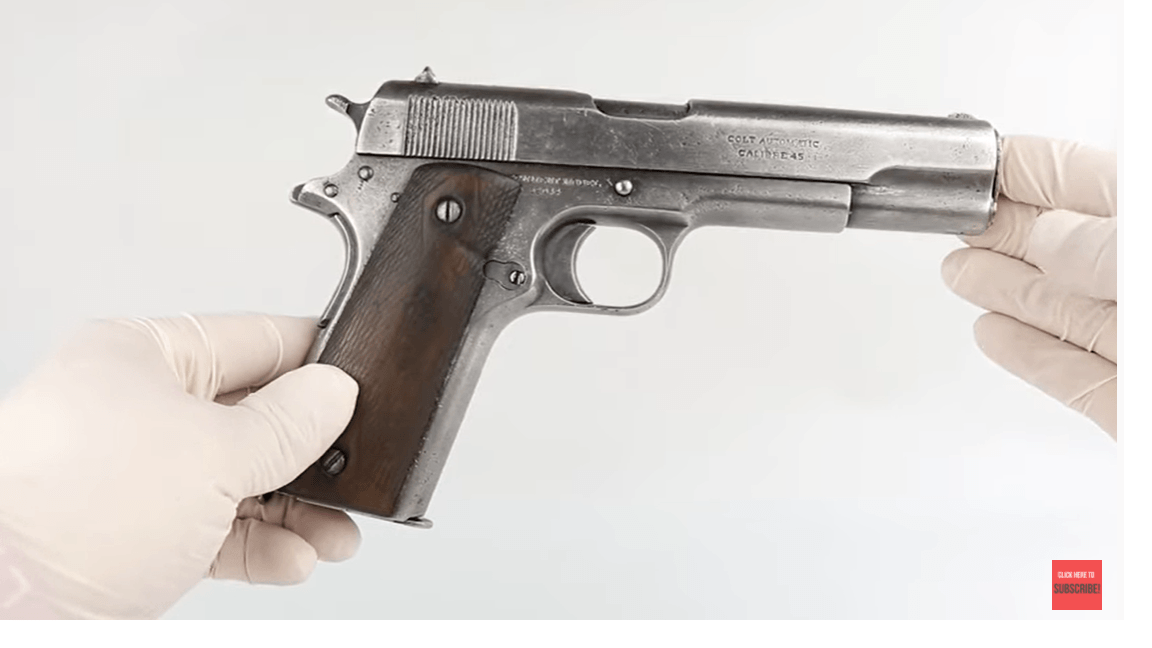
What makes these distinct is not only the serial range because between 1916 and 1918, there was about 66,000 of these sent out. That number surprised me because these are so rare they just never show up in the United States. They have a hard time coming back to the United States because basically they were issued to Russia which didn't trade guns with us as a general rule. Now they do a bit but as a general rule, Russia did not trade guns with us; or they were sent to Russian allies and they do not trade guns with us. So they rarely show up here in the United States. And so to find two of them that were shipped on the same day is quite a coincidence.
Time for a closer look
So first let's take a closer look at this gun. Now you can see it's almost all white metal because the finish is completely gone. At one point it was blued and these of course were blued guns. 1916 World War I was going on, we'll talk a little bit about that in a bit. But it has the standard logo for a 1911 Colt on the left-hand side. And you can see the Colt stallion on the tang of the slide, again pretty worn. These grips look like they're original to the gun because of the wear pattern; again it's just really heavily worn. The magazine also looks like it could be original to the gun because of the wear on the magazine.
Good condition for a warhorse
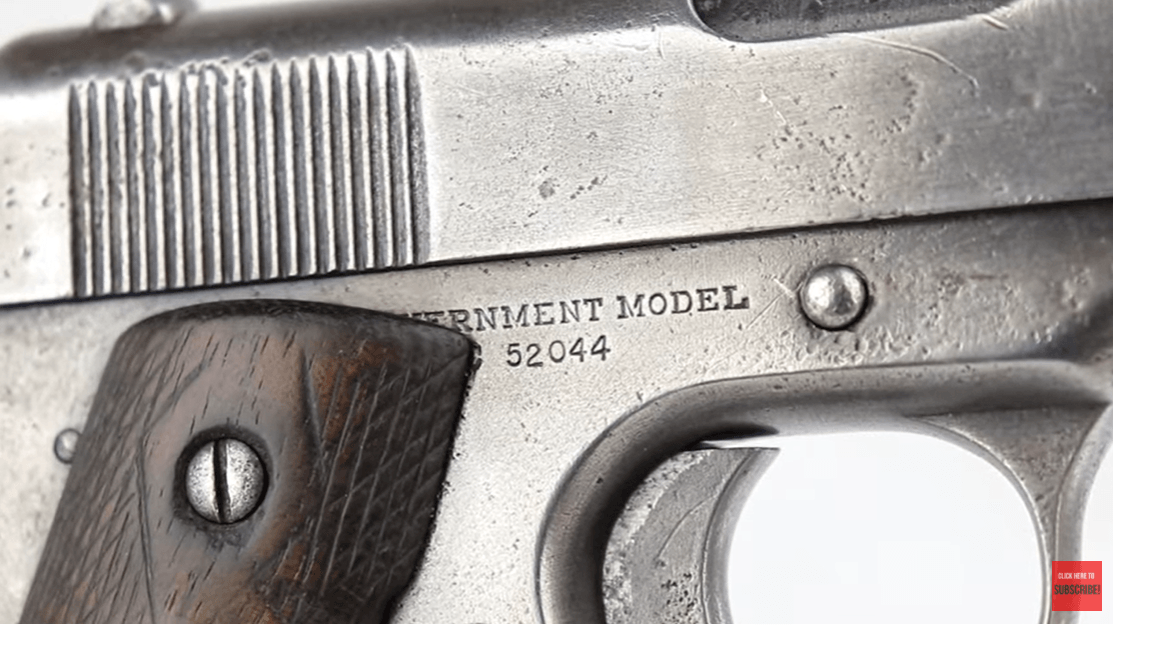
The bore is a bit of a surprise in that it has strong rifling but it is frosted throughout. Meaning there is some corrosion especially in the grooves but overall the bore, I would rate it a 7 out of 10. It's not bad at all. But again the condition of the gun is not pitted. It was cared for in terms of wiped down and kept free of rust and pitting. So for that reason, it's in pretty good condition for an old Russian war horse. It is a commercial gun. If you look at the serial number it's covered up but all of these indicates that it had a C- prefix and then the serial number. So all 60 something thousand of these were commercial guns that were contracted to the Russian government for World War I.
A closer inspection
So I took the time to take this gun apart. Nothing remarkable, the feed ramp is polished, so kind of in the white but corroded. There is an S mark on the frame, I'm sure that's a proof mark. There are other proof marks. You can see the inside of the slide. On the frame, when you look under the takedown lever you can see that the original bluing is still there. So unexposed areas that weren't heavily wiped are still in the original blue.
Original barrel or not

The barrel is in a remarkable condition, again, the bore was not too bad but also there's a lot of bluing left on the barrel. And on the barrel you don't see any markings on commercial guns [inaudible 05:23] other than a letter stamp which would be an inspection and here you can see the P which is pretty common, inspection stamp for the barrel. But otherwise unmarked. Could be the original barrel, I can't say for sure.
From the cold war to World War I
So let's talk a little bit about the history of this gun which I find even more interesting than the gun itself because the history is so rich. So Russia entered the war in July of 1914, that's when World War I broke out. And it was because Russia was allied with the Serbians, and Germany was allied with the Austria-Hungary Empire. So those two spheres of influence have actually been fighting a cold war for about ten years, competing with each other. And France had gotten themselves into it by backing Russia. Basically they told Russia if you happen to go to war with Germany for any reason, we got your back. And of course Britain was allied with France. So once the archbishop of the Austrian-Hungary Empire was assassinated by Serbia, Russia was pretty much duty-bound to go to war with Germany and the Austria-Hungary Empire and then of course, France was duty-bound to go to war and support Russia. And then Germany was of course duty-bound to enter the war on the side of France because of alliances with France. So all of that began a very complicated World War I.
It was the peasants that died
But in general terms it was royal family obligations. They were interrelated, a lot of cousins and distant relatives throughout Europe. Part of the royal family, the Romanov family was related to royalty in France and England. And so these royal families were going to war but the people who fought and died were the common folk people and that was no more evident than in Russia.
Russia was not ready for the war
Because in Russia you had the royal family, the upper class and then you had a very poor peasant society. So the upper class goes to war, the peasants do the fighting, they're sent to the front lines and if you read the history of it, Russia really wasn't prepared. Even though they threatened war for several years, when the war actually broke out they didn't have enough equipment so they sent men to the Russian front without the proper equipment, without the proper clothes and therefore the peasants died by the tens of thousands and then hundreds of thousands and eventually by the millions. They were led by aristocratic, well again distant relatives of the Emperor. Those were the officers, they were fairly inept, I'm sure that's an opinion that people have written over the years. But generally it was found to have poor leadership, poor organization and poor supply lines.
Not enough weapons
And that's part of the history of this gun, this is why this this is important to note. They didn't have weapons, they couldn't produce enough weapons, as far as a pistol they had a Russian Nagant. But they didn't have enough of them and they couldn't produce them fast enough.
Other examples of weapons
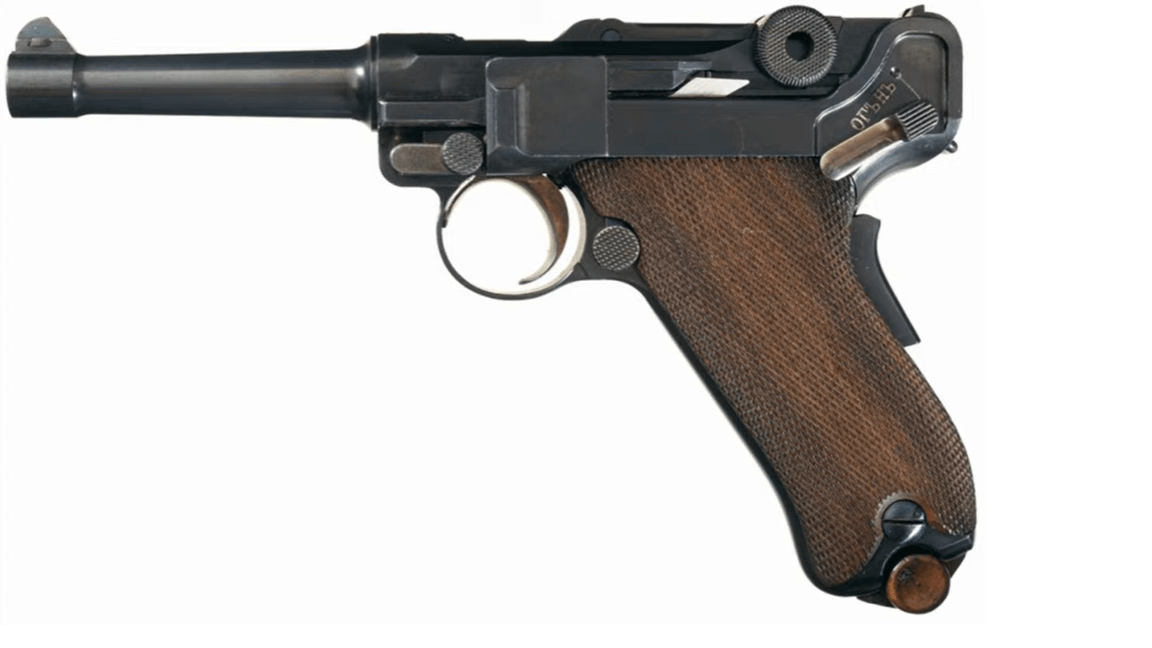
And so there are other examples and one of them that comes to mind is the Luger. There is a Russian Luger. Much more rare than the Russian 1911 Colt but you can see here a picture of a Luger that has the crest, which is the cross. It's actually a Mosin-Nagant. You can see the crossed rifle was their crest on the Russian Luger. They are very rare, I have owned one in the past. They are heavily faked or else refinished, as are these 1911 Colts. They're not so much faked as they are refinished and reworked because they really have been through a lot.
The Russian X

But that crossed X, just as an aside for you P-38 lovers, I've heard it told that the Russian X from Russian captured P-38s in World War II, is actually a crude imitation of the crossed rifles. Not sure that that's true but it's an interesting piece of information. If you see a Russian X on a P-38, they also captured some Lugers and did the same thing. You will see this X on the gun.
The English Contract

So they searched Europe and the United States for available weapons and of course, the United States was able to step up but they did the deal through England. And that's important because one of the things that you may not have noticed was the Cyrillic writing which is basically English-made or English contract. You can see it a lot better in this other gun that I found on the internet, again, only about 800 serial numbers away. You can see the Russian inscription. Again English order or English contract is the general interpretation. They went through England, the order went through England. It was financed by J. P. Morgan and it was a lend-lease program. I don't know if these were ever paid for but they certainly were paid for by Russian lives. So 66,000 were ordered, the order came through England. Some of them are marked with the Cyrillic writing and some are not. I'm not sure why some are and some aren't but I did find within the same shipment, some were not marked.
Help me out here, please
So I had different theories about the ones that came straight from the United States were not marked and the ones that came through England were marked but I can't prove that. If any of you know help me out, let me know; but it does seem that more are not marked. So to find one with the Cyrillic or Russian writing on it is a lot harder, a lot rarer and these do command a premium.
The guns arrived but weren’t used until the Russian Evolution
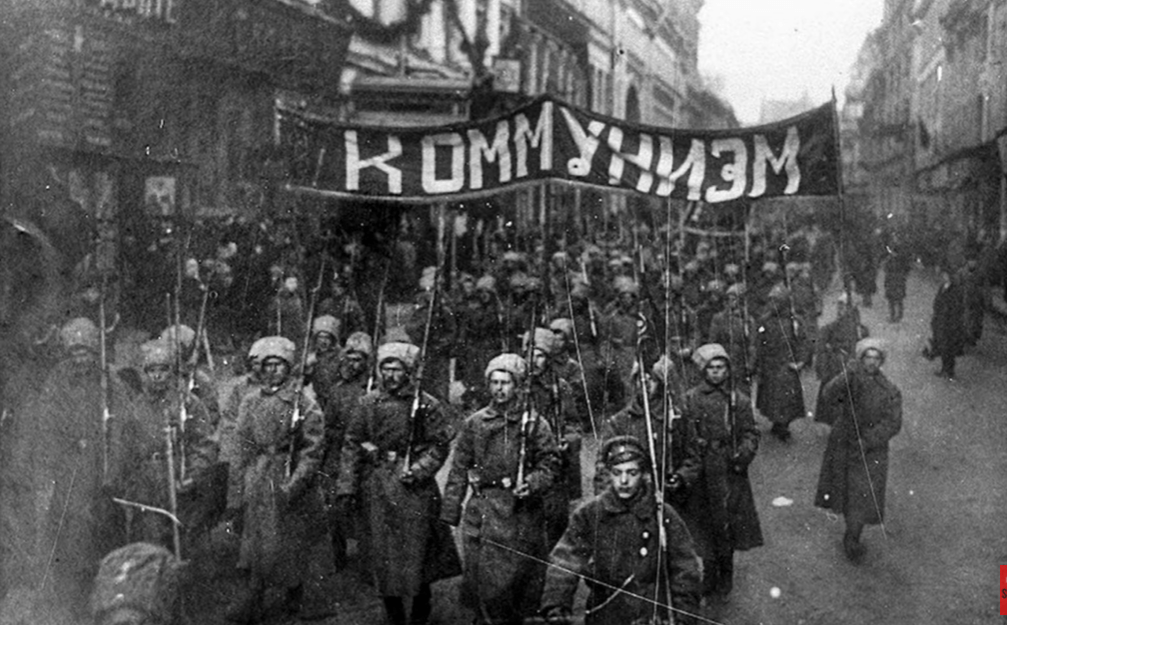
So once these guns arrived in Russia they actually sat on the docks unissued. Again poor logistics they weren't able to get them to the fighters and the docks were pretty much run by the lower class. The dock workers were all from the peasant class and therefore probably like our unions today the longshoremen, they control the docks. So what happened to these guns is they didn't go to the troops that the Russian government intended but they arrived sometime in late 1916, 1917, the Russian Revolution started. So these were actually seized at the docks and distributed to the revolutionaries - the Russian Revolution.
This gun shot the Tsar

One of the ironies of this gun, and this gun in particular, is the Romanov family. You can see a picture of them here. Most of you know they were all executed in the middle of 1918. So again this gun arrives in late '16, the revolution starts in early '17 and it is recorded that the Tsar was shot by a .45 caliber. I presume it was this gun. I think it was this gun. It just speaks to me. Now I know some of you love to beat me up about my lack of provenance, in this case, I'm just sure it's his gun; this is the gun because I can feel it. So don't bust on me, of course, we don't know which gun was used but a gun like this was used to kill the Tsar but they also had other weapons, other calibers. It was pretty much a bloody massacre. There was a Broomhandle involved from the history that I read and also Nagant. So different guns were used but a .45 caliber was evidently used.
Where is the ammo!?
Also .45 caliber is an interesting part of the story. The Russians didn't make .45 caliber ammunition, so after these guns were issued they can only be used for a short period of time but evidently they ran out of ammo very quickly. And so we'll come back that to that in a little bit. So the guns were delivered to the Russian government all the way up until the middle of 1918 and basically were not going to the troops. The troops mutinied, they just walked off the field. Some of them killed their own officers and walked off the field, refused to fight, went back and joined the revolution. So things came unglued very quickly. The Revolution lasted through most of '17 and culminated in the fall of 1917. And so by 1918 these are still coming in, they are distributed but again lack of ammunition. The United States after the Revolution and the allies were no longer supplying the Russians. So a lot of these just went into storage or went into people's possession and between the wars they were probably put in storage.
Now World War II, the guns were used here!
So then everything changed when World War II started because as you know surprisingly, Germany was allied with Russia and they basically broke the treaty and invaded Russia in June of 1941. So suddenly now and this is a much different war. Because before you have the royalty using the peasants to fight their wars, now Germany has attacked Mother Russia and so the people rise up and stage a heroic defense of Leningrad and the rest of Russia and finally make a huge comeback and basically win the war with our help. But these guns were then pulled out and used in World War II.
The Germans captured Guns too
There is record of these guns being captured by Germans. So German soldiers when they came in they did capture some of these guns but there also was a second lend-lease program. So 1911 A1 Colts also went to Russia, as well as England. So there was a lend-lease program. And again, if you know, was it ever paid? I don't know. It was paid certainly in Russian lives because Russia lost more men in World War II than any other army. So they made huge sacrifices and we were proud to be able to help supply them with arms and ammunition. So during World War II the ammunition did flow again. These were used in World War II. So again take another couple of layers of finish, put a little more wear on this because now we've been through a second war.
The P-38s were captured
So what I found interesting is after the war I mentioned that they captured a lot of P-38s, actually hundreds of thousands of P-38s that they put in storage and kept. And probably because they were 9mm. I don't know for sure why they kept them but they kept them in storage, the holsters.
The fall of the Iron Curtain
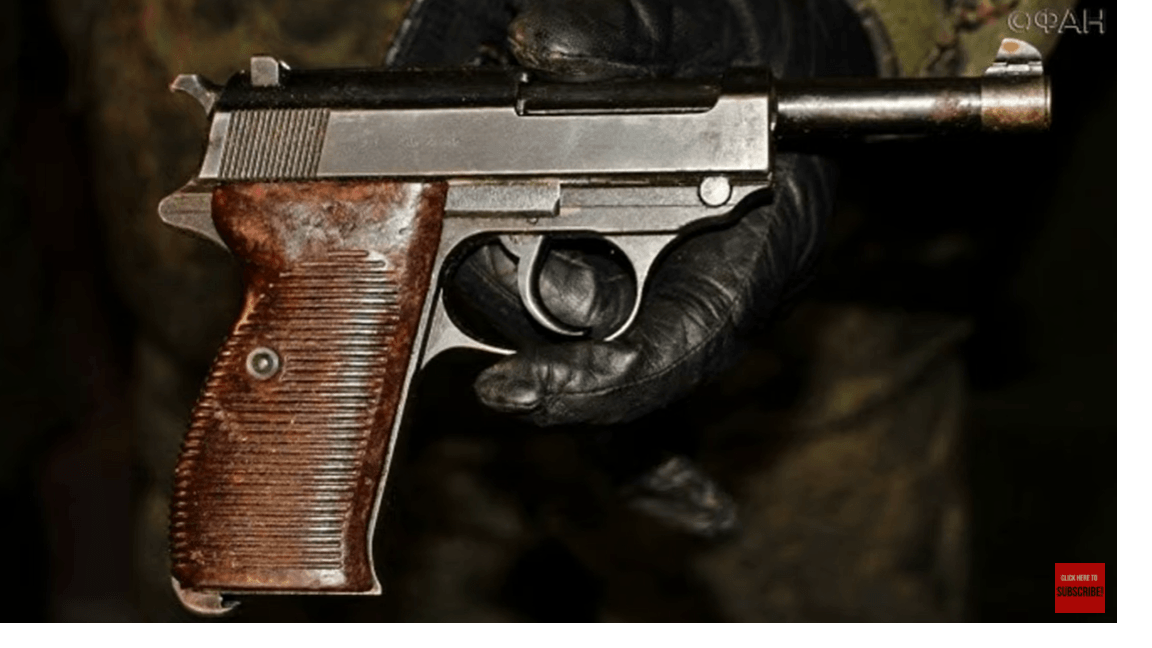
The reason I know that is they all came out not too long ago after the fall of the Iron Curtain. Russia, East Germany began exporting these to the west because they have them in storage. Usually they were Russian dipped which is like a tarry substance that dries on it, that kind of keeps it from corroding. And also the Russian X's I mentioned earlier. The 9mm they kept until the fall of the Iron Curtain but these they shipped to other countries.
They were widely distributed
The point I wanted to make is these 1911 Colts ended up going all over Soviet satellite states. So for example many went to China when they became communist and some of them were involved in the Chinese Revolution. Some of these came out of Vietnam, so I assume they went to China, China sent them to Vietnam. They end up in Vietnam captured by U.S. Servicemen and this gun in particular, remember the gun that shot the Tsar, it ended up in Iraq. The owner of this gun said that he got it from an Iraqi Vet who brought it back from Iraq as a captured gun.
Nothing normal to get the guns here
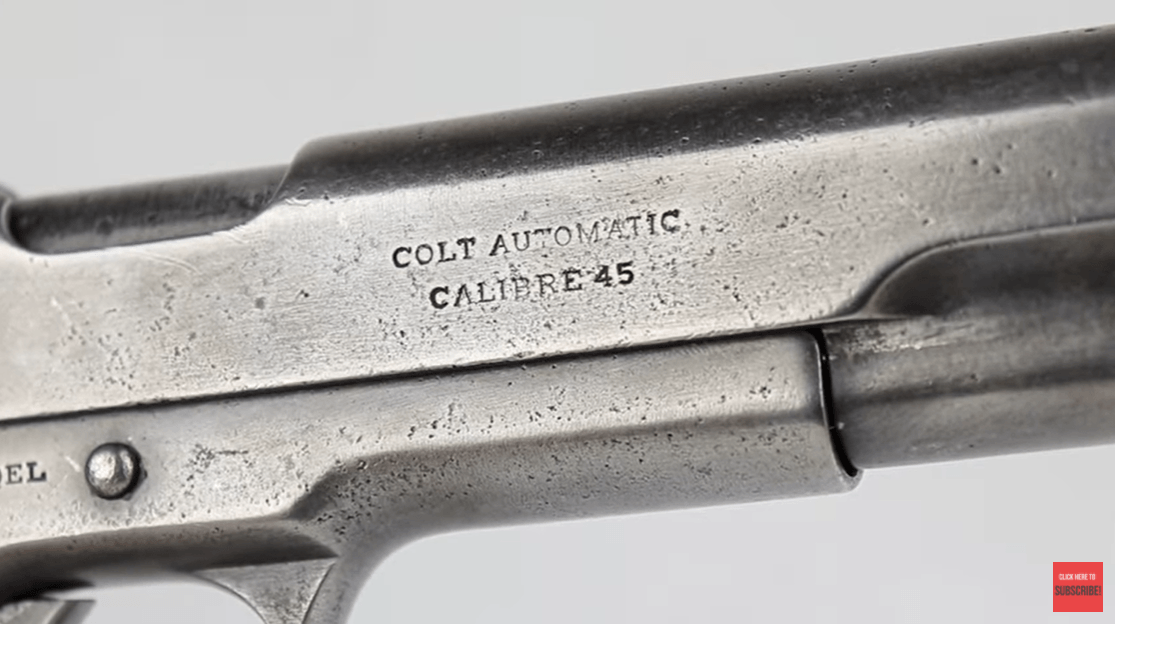
So you can see why it is so hard to bring into this country because it's not import stamped, there's not a normal channel to bring these in. They have to come in through other channels, we'll remain vague about that. But basically they come into this country from places like Afghanistan, Vietnam and Iraq. So all that is to say, if this gun could talk it would have quite a story to tell and I’m really proud to bring it to you today.
What a historic video!
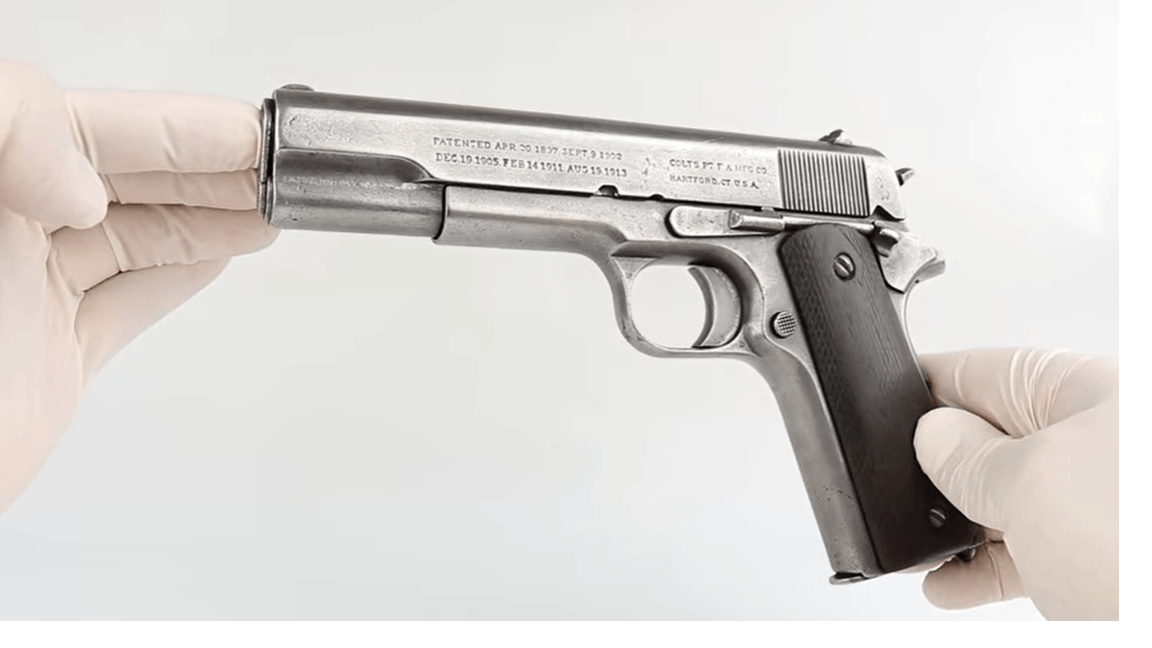
I hope you enjoyed it as much as I did. An old war horse that went through a lot and now documented for all of history on our YouTube channel. And that's why it's important for you to like and subscribe. Tell your friends about our channel because I have a lot more just like this coming at you.
